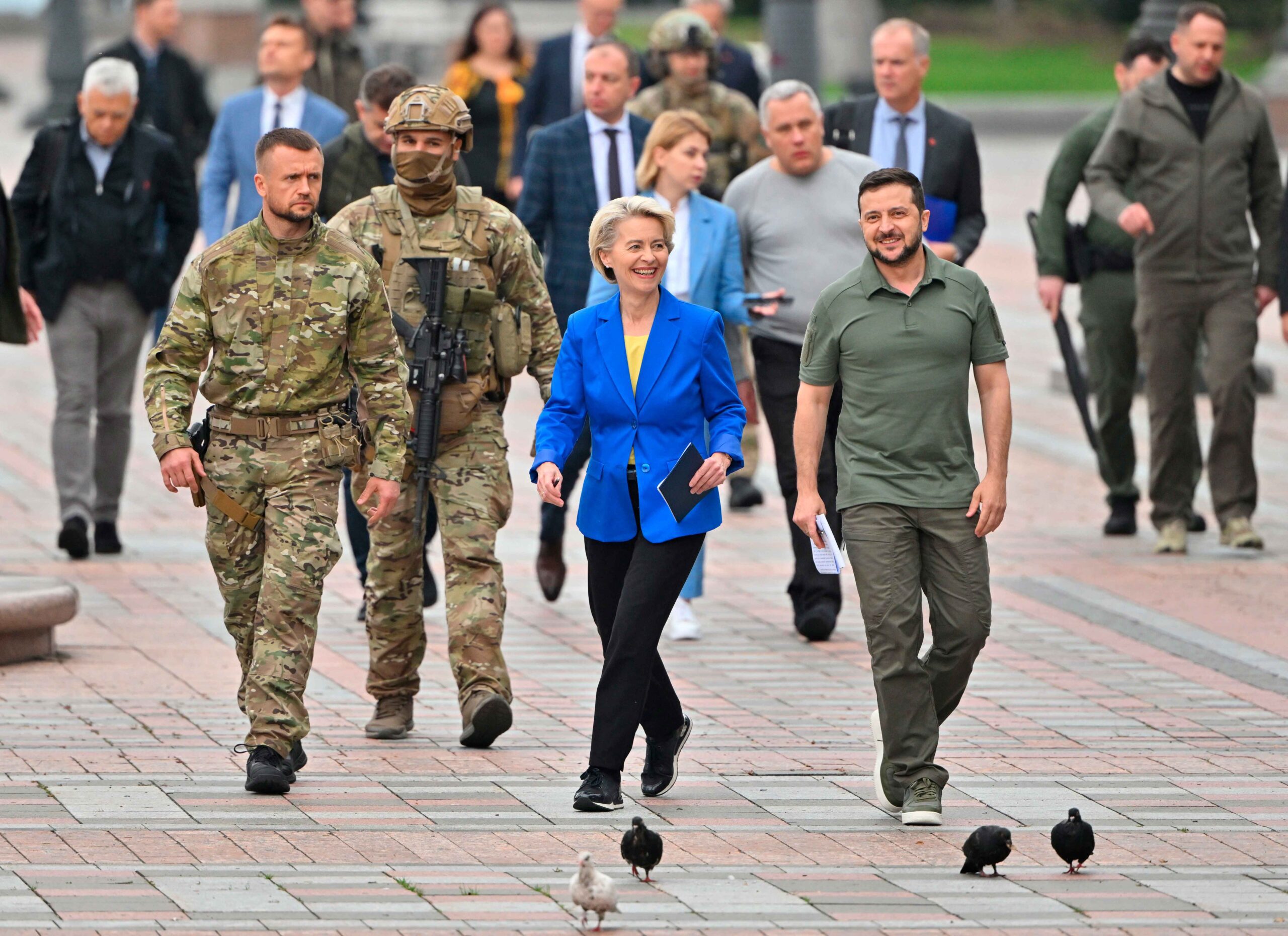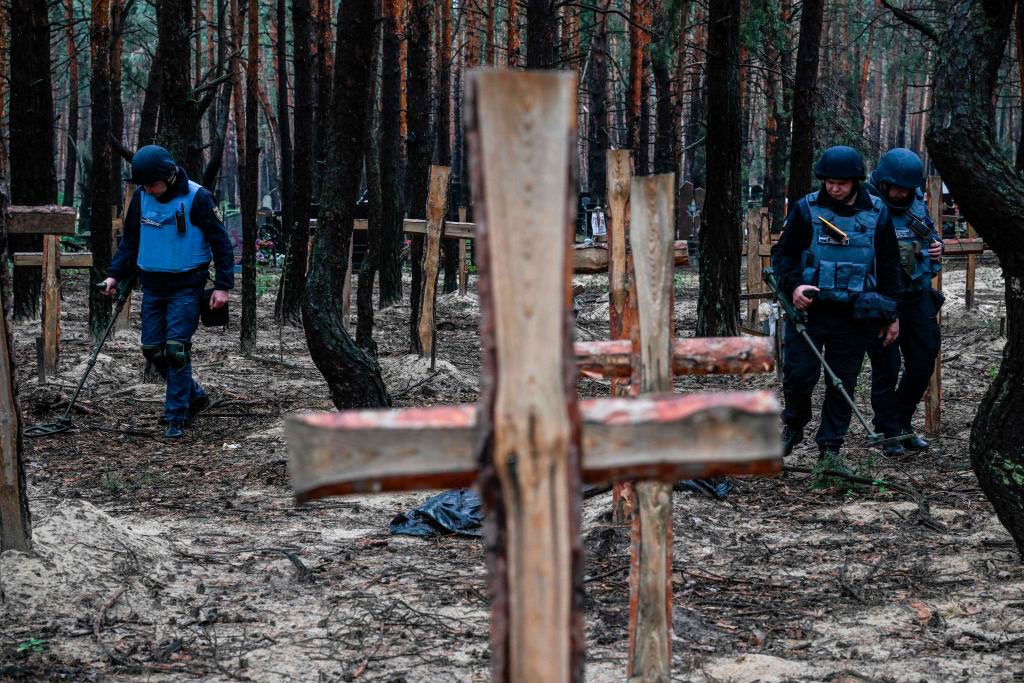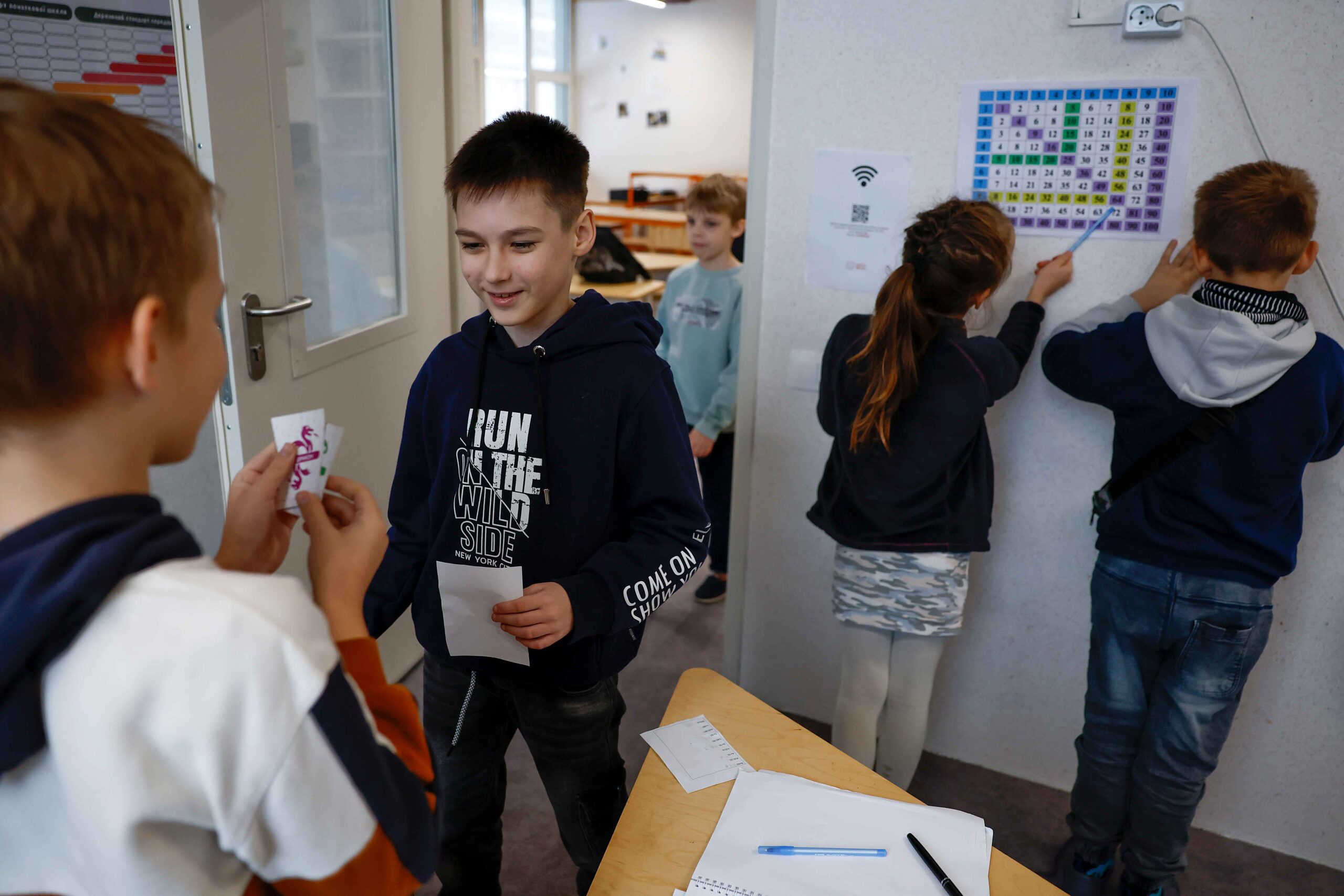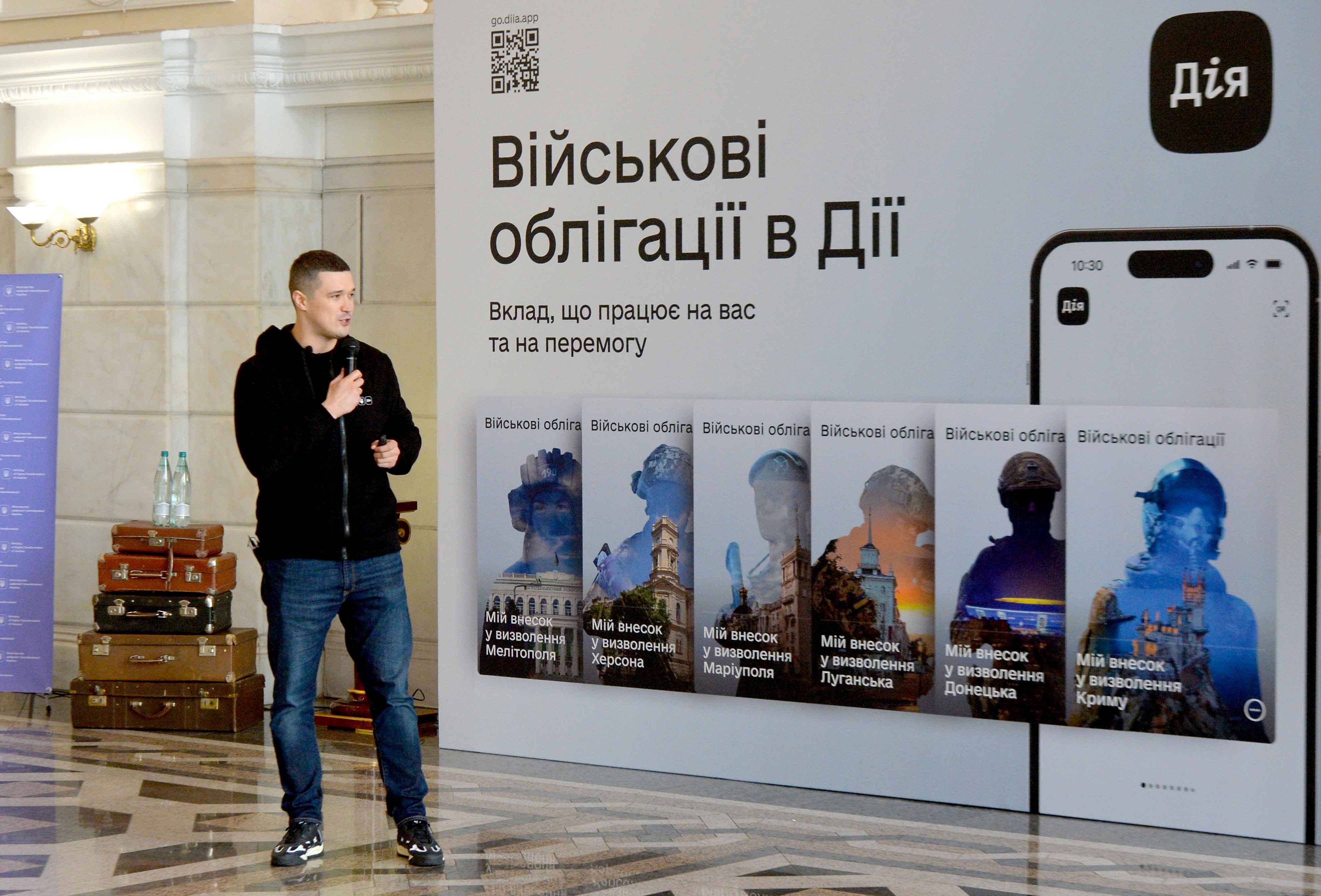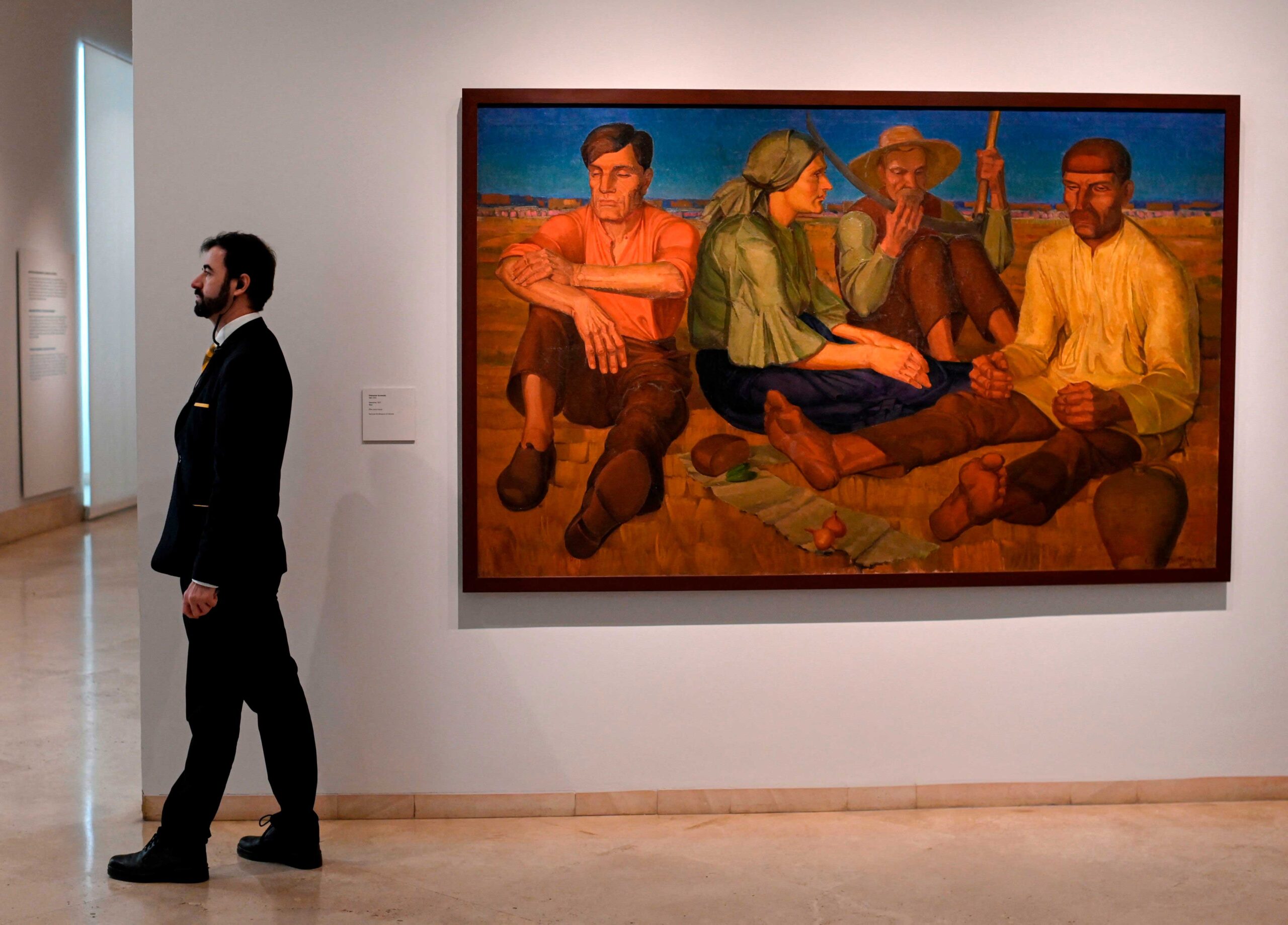Ukraine in 2022: what has changed because of the war and how it will affect the country in the future. The editors of Zaborona summed up the results of the year
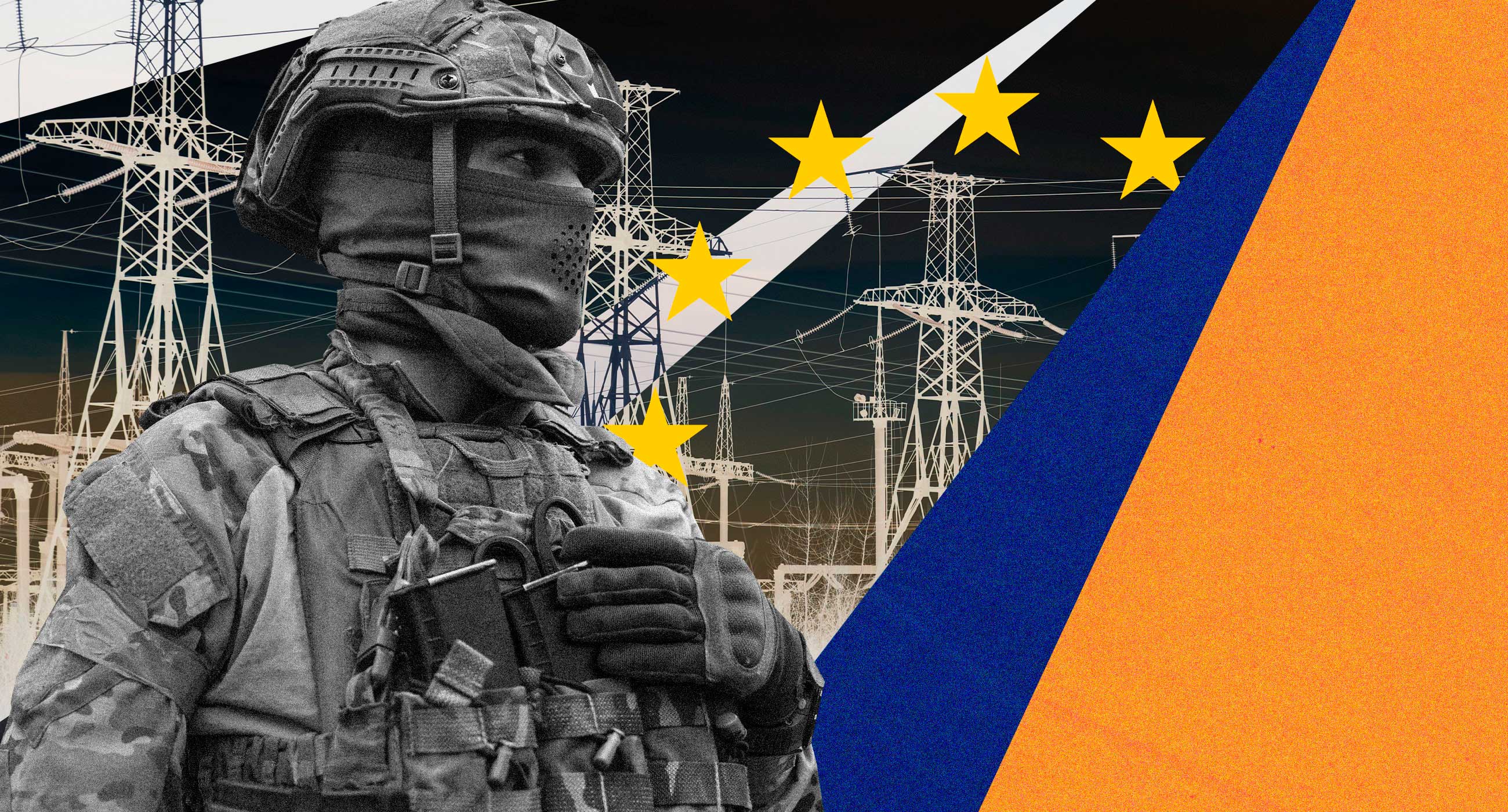
2022 became the most tragic year in the history of independent Ukraine — and at the same time, the most productive: the war accelerated processes that the country probably would not have been able to start in peacetime and decades later. The editors of Zaborona summed up the year’s results: how it strengthened the Armed Forces and brought them closer to NATO, whether the country is moving towards the EU, what the Western world now knows about us and why it will no longer ask: “Ukraine? “Near Russia?”.
Protection
This year radically changed the Ukrainian army
Ukraine is actively switching to Western weapons, although such a process was almost unattainable in peacetime.
The most technological systems of the salvo fire were delivered to Ukraine: Himars, M270 MLRS, and its modified version Mars II. The request to NATO to close the sky changed to an alternative: “We will close its air defense ourselves.” Ukraine received highly effective Iris-T systems, and the US has already announced the transfer of Patriot — one of the best developments in anti-missile defense. In addition, the Ukrainian Air Force has learned to shoot down 70 to 90% of Russian missiles and kamikaze drones.
Before the full-scale war, Ukraine had only 152-millimeter artillery installations, which are significantly inferior in characteristics to Western models. Still, the Armed Forces received the Swedish six-wheeled Archer self-propelled guns, the German Panzerhaubitze 2000 self-propelled howitzers, the Polish AHS Krab self-propelled howitzer, the French CAESAR wheeled artillery installation — all 155 millimeters. In addition, the Secretary of the National Security Council, Oleksiy Danilov, announced that the Ukrainian defense industry could already produce its own 155 mm projectiles while Russia is starving for projectiles.
Modern warfare (fourth-generation warfare) has demonstrated that the future lies in post-human weaponry — machines that do not require pilots. Ukraine received combat not only drones but also the latest naval drones — one of them sank the flagship No. 2 of the Russian fleet. And the world’s best armies — from Britain and the USA to France and the Netherlands — teach Ukrainian defenders the strategies and tactics of fourth-generation warfare, which teach NATO-standardized practices to the Armed Forces of Ukraine.
This year also demonstrated the progress of the Ukrainian defense-industrial complex. Cruiser “Moscow” sank in the Black Sea precisely due to the impact of the Ukrainian missile “Neptun,” which was only recently put into service by the Armed Forces. The Ukrainian General Staff called the Stugna-P anti-tank complexes very effective. Another possible breakthrough for the defense industry could be the recently announced combat drone. According to Oleg Boldyrev, the project manager of the Ukroboronprom concern, drones can attack targets several times, their flight range is 1,000 kilometers, and the warhead’s weight is 75 kilograms.
Europe
Ukraine is closer than ever to joining the EU
The year 2022 became a time of sharp acceleration of the European integration of Ukraine. The change in the position of the EU and the busy work of Ukrainian diplomats led to the fact that on June 23, 2022, Ukraine received the status of a candidate for EU membership.
However, this status was obtained in advance — the European Union put forward seven demands that the Ukrainian authorities must implement to preserve it. Including:
- Reform of the Constitutional Court;
- Continuation of judicial reform;
- Anti-corruption, including the appointment of the head of the SAP;
- Fight against money laundering;
- Implementation of the anti-oligarchic law;
- Harmonization of audiovisual legislation with European legislation;
- Change in legislation on national minorities.
Ukraine has indeed made progress and formally fulfilled some of the EU’s requirements, but how this is happening raises many questions. For example, on December 20, Volodymyr Zelensky signed Law No. 7662 on the competitive selection of candidates for the position of judge of the Constitutional Court of Ukraine. The law was promoted as necessary for joining the EU, but its adoption ignored the position of the Venice Commission, which saw severe problems there.
-

Ukrainian President Volodymyr Zelensky (R) and President of the European Commission Ursula von der Leyen arrive to deliver a press conference following their talks in Kyiv on September 15, 2022. Photo: SERGEI SUPINSKY/AFP via Getty Images
When adopting the law “About Media,” the deputies ignored the warnings, the position of experts, and the media market itself, creating a state regulator in Ukraine in the form of the National Council, which under the new law can impose sanctions on mass media, remaining a politically involved institution. Zaborona talked about this in detail in one of the latest materials.
During this year, Ukraine made a colossal leap towards joining the EU, but this was due to the heroism of the Ukrainian army and people. The authorities themselves, as can be seen from recent events, are trying to strengthen the positions of candidates from the presidential party, and overcoming corruption seems to be the biggest problem if we recall the latest investigations into the theft of humanitarian aid in Zaporizhzhya or 2 billion for the construction of roads in the Dnipropetrovsk region.
Human Rights
What happened to the Ukrainians?
This year, many Ukrainians experienced, perhaps, the most terrible experience in their lives — one that they would never have to experience if it were not for Russia. Occupation, capture, torture, murder, rape, loss of loved ones and homes — all this is a collective trauma that the world will have to deal with for many decades.
International and human rights organizations have been documenting war crimes committed by Russia on the territory of Ukraine since the beginning of the full-scale invasion. At the end of October, the police opened about 40,000 criminal proceedings related to the actions of the Russian army. The Ukrainian Helsinki Human Rights Union documented 27,137 war crimes cases, including 6,200 murders. In a recent report by the UN High Commissioner for Human Rights office, as of December 19, 6,826 civilians were killed and 10,769 wounded.
-

Ukrainian service members search for mines at a burial site in the forest on the outskirts of Izyum, September 16, 2022. Photo: JUAN BARRETO/AFP via Getty Images
However, these figures differ from the actual situation because there is no access to the occupied territories and no witnesses. The statistics do not include all those who died from the chaotic shelling of civilian objects. Only in Mariupol, according to the calculations of local officials, more than 20 thousand townspeople died during the offensive of the Russian army.
Many Ukrainians lost their homes this year. Driving along the highways of the Kharkiv, Donetsk, or Luhansk regions, you can come across villages and towns that no longer exist. It will probably take decades to recover. However, whether the residents of the destroyed buildings will ever be able to return home is a question with an asterisk. According to Human Rights Commissioner Dmytro Lubinets, over the past ten months, about 14.5 million Ukrainians have left abroad because of the war.
However, paradoxically, Russia’s armed aggression united Ukrainians in a way that no political force within the country could. It is evidenced by the number of troops, which tripled after the full-scale invasion, and the volume of new volunteer initiatives and funds, created mainly by people who had never volunteered before, and massive collections of donations for defense and civilian needs, which Ukrainians closed in a few days.
Military rights
The issue of protecting the rights of military personnel arose
The military remained (and remains) a vulnerable social group whose rights were primarily ignored until February 24. Currently, for martial law, service members and employees of other security agencies are paid an additional 30,000 UAH per month (for those who directly participate in hostilities, the payment increases to 100,000 UAH). The government also approved payments to the families of fallen soldiers and other employees in the amount of 15 million hryvnias.
However, there are also negative changes in the legislation. This year, Law No. 7251 guarantees only the retention of the place of work and position to a contract employee or conscript. However, previously the average salary at work that preceded joining the Armed Forces was also guaranteed. Employers may withhold wages from those serving in the military until they are discharged.
Another significant change occurred this year regarding the possibility of military personnel going on vacation. Previously, leave could be taken only for family and other valid reasons. Still, on December 20, the President of Ukraine, Volodymyr Zelensky, signed the law of Ukraine granting leave during martial law. On November 19, Law No. 6104 entered into force — it provides for social and legal protection of prisoners (and their family members) who were deprived of their freedom due to armed aggression against Ukraine. The law aims to protect combatants, foreigners, stateless persons who have completed military service, and civilians. Although the Ministry of Reintegration of the Temporarily Occupied Territories has already started payments, it is difficult to confirm the status of a prisoner or a missing person. Because of this, captured combatants may be considered missing or have the status of deserters altogether.
One of the most ethically questionable provisions is the obligation of the military to return to the front after severe injuries and injuries. Fighters who have not been able to recover their health fully can be recognized as “limited fit,” remain in the ranks of the Armed Forces, and be transferred to the rear. However, fighters risk returning to the combat zone even in this state. For example, Masi Nayem, who lost one eye back in June, remains a soldier (note: by his own will; however, there are cases when soldiers with similar injuries do not want to return to the front). According to Article 31 of the order of the Ministry of Defense, “On military medical examination,” the loss of one eye is not a reason for dismissal if the other can see well. However, the voice of a soldier himself should become essential.
Economy
What happened to Ukrainian business?
According to various estimates, Ukraine’s GDP in 2022 decreased by 35-50%, and every second enterprise was closed or lost the opportunity to work as a result of active hostilities. According to Gradus research, 54% of Ukrainian businesses are partially or temporarily closed. More than a third of businesses (35%) report a decrease in income by more than half, and another 23% of the surveyed companies say about the reduction of income by a quarter or more.
At the same time, 47% of businesses expect growth next year, despite the war. Most companies expect to receive a positive financial result and increase revenues in hryvnia. In some sectors of the economy, such as retail trade in regions located far from the front line, activity in September almost reached the pre-war level. But power outages have put this recovery at risk. The hardest hit are restaurants, retailers, and small businesses that do not have generators or priority for power.
-

A man selling tools to customers is seen behind the counter of a Kyiv bazaar in a blackout. As a result of massive missile attacks on Ukraine’s electric power infrastructure by Russia, more than 50% of the country’s unified energy system was lost, National Energy Company (NPC) Ukrenergo said. Photo: Mykhaylo Palinchak/SOPA Images/LightRocket via Getty Images
At the same time, 50% of the surveyed businesses are confident that active hostilities in Ukraine will end by the end of next year, and are worried that next year the biggest obstacles to business will be the consequences of the war, high prices for materials and raw materials and lack of demand. However, 90% of entrepreneurs believe that Ukrainian businesses can be competitive and successful in European markets and do not plan to close their businesses in Ukraine. Some have even expanded: this year Ukrainians have registered more than 10,000 companies in Poland. Including 9,829 companies after March 1. This led to the creation of the Global Business for Ukraine initiative, which will unite foreign business with Ukrainian business, bring the latter to foreign markets and integrate global companies into the Ukrainian market.
However, the risks of the global economic crisis and stagflation may add to the difficulties for Ukrainian businesses next year. In the coming years, Ukraine will be a subsidized state, where the state will be the main investor for a certain period. And the priorities set by the state will determine how long it will take Ukraine to overcome the crisis.
Light
Successes and problems of the energy system
At the beginning of the year, the Ukrainian energy system made a huge step in its own development and joined the EU energy system. Ukrainian experts have been working on this process since 2005. The Russian invasion demonstrated that the move was the right one: Ukraine has disconnected from the Russian and Belarusian energy systems.
The start of electricity exports to the EU countries led to an increase in the liquidity of the Ukrainian energy sector because it is impossible to sell electricity profitably inside the country due to low tariffs. However, in October 2022, Russia began systematically shelling the Ukrainian energy system.
Currently, the situation in the Ukrainian energy system remains critical. The capacities that can be generated, transformed, and distributed to consumers are not enough for the whole country, so scheduled and emergency outages continue. The generators currently supplied to Ukraine are primarily installed at critical infrastructure facilities.
As experts noted, the problems with the lack of electricity may accompany the Ukrainian energy system for a long time (according to new forecasts — until summer) due to the continuation of shelling and the complex restoration process. However, we should not expect that the Russians will be able to completely and irrevocably turn off the light throughout Ukraine.
Education
Education after COVID and during the war
COVID-19 has completely changed the organization of education: school has become another platform for remotopia — a phenomenon of 2020 when all institutions and corporations have moved to virtual offices, classrooms, and lecture halls.
Due to the insufficient level of digitalization, many Ukrainian schools and institutions have not managed to establish a system of communication with students. Educational institutions have organized the educational process in such a way that part of the program is completed in the classroom, and the rest — online. The hybrid format proved to be difficult: preparing presentations and class materials took much more time, and online learning made it impossible to control students. In June 2020, University College London published the results of a study that showed that during quarantine, two million British schoolchildren, studying at home, do not listen to teachers.
-

Children attend classes at Spilno School on November 21, 2022, in Kyiv, Ukraine. Although many signs of normality returned to Kyiv after Russia abandoned its attempt to seize the capital, a wave of missile attacks on Ukraine’s energy infrastructure has made disruption and destruction a persistent feature of daily life here. Photo: Jeff J Mitchell/Getty Images
After February 24, the situation worsened: educational institutions either did not work at all or switched to the remote, unsystematic organization of education. After the interception of the military initiative by the Armed Forces of Ukraine, most full-time schools introduced a shift format of education (because during air raids, bomb shelters cannot accommodate all students at the same time). However, in October, the situation deteriorated due to the strikes on the energy sector, as well as due to the existing problems of the education sector — the lack or shortage of gadgets for distance learning and teaching children with special educational needs.
Another already outlined future problem is the leakage of Ukraine’s intellectual assets. Last year, the International Organization for Migration noted that among the countries of southeastern Europe studied by it, Ukrainians make up the largest share of labor migrants with higher education. The experts of the organization see this as a threat to Ukraine — the number of Ukrainian students in the EU is from 60 to 70 thousand people, and most of them may not return to Ukraine.
Electronic self-government
Diia app became a weapon and attracted the attention of business angels from the United States
In the late 2010s, the media increasingly wrote about digital or cloud democracy — the integration of the IT sector and its tools into political and administrative structures. Electronic voting, crowdsourcing of ideas from the public community, blockchain, which records the actions of officials and thus makes them transparent, and finally, convenient applications that collect digital documents of citizens for quick access to services.
The list of the best digital democracies looks like this: South Korea, Taiwan, and Estonia. After February 24, Ukraine was added to it. The war has highlighted Ukraine’s IT achievements, which previously were not very interesting in Western Europe and the United States. The main IT product of the Ministry of Digital Transformation, the Diia app, has evolved from a digital wallet that stored passports and vaccination certificates into a full-fledged weapon and support center for Ukrainians.
-

Deputy Prime Minister of Ukraine – Minister of Digital Transformation of Ukraine Mykhailo Fedorov speaks during the presentation of military bonds in the DIIA mobile app, Kyiv, capital of Ukraine. Photo: Yevhen Kotenko / Ukrinform/Future Publishing via Getty Images
Diia allowed Ukrainians to transmit the coordinates of enemy equipment and personnel to special services. Thanks to the eVorog (eEnemy) bot, anyone can try themselves as an artillery gunner and see the result of their assistance in the morning reports on Russian losses. After the Armenian-Azerbaijani conflict in Karabakh, the Ukrainian-Russian war has become the second example in history of the massive use of drones — together with the General Staff, Diia helps Ukraine to achieve an advantage in this area. The Army of Drones feature has already raised UAH 495 million. A bit of The Wall Street vibes: Diia also offers to buy military bonds and support the Ukrainian defense industry — and make money on it.
At the same time, the team of the Ministry of Digital Transformation worked on adding new administrative features. For example, on March 11, the program launched the mechanics of eDocument — a duplicate passport, thanks to which citizens who lost their physical documents during the war had access to all public services. In addition, in April, the function of reporting damage to housing from Russian attacks was added, and later support for regional businesses, internal refugees, and people who lost their jobs due to the war.
And finally: Diia has become a springboard for future tech sector projects — and not only in Ukraine. Estonians have already taken the Ukrainian app as an example to work on their own public service, and Western startups and business angels have realized that Ukraine is the best investment after the war.
Cultural expansion
Ukrainian culture has become widely known abroad
Apart from academics, specialists in Eastern Europe, researchers of the Soviet Union and post-communist countries, and perhaps interested travelers, the world either viewed Ukraine in the wrong context or did not know it at all. In the popular consciousness, Ukraine was perceived as a liminal (i.e. stuck on the threshold) territory: not quite European enough to be perceived as equal by Europeans, and not quite pro-Russian enough to be considered Eurasian.
-

A gallery assistant stands near ‘Rest’ by Oleksandr Syrotenko during the press preview of ‘In the Eye of the Storm’ an exhibition on Ukrainian avant-garde art in the first decades of the 20th century at the Thyssen-Bornemisza museum in Madrid on November 28, 2022. – Some 70 modern artworks which were removed from Kyiv to protect them from Russian missile strikes that have done huge damage to Ukraine’s cultural heritage will go on display on November 29 at the Madrid Thyssen-Bornemisza museum. Photo: OSCAR DEL POZO/AFP via Getty Images
The war helped foreigners to conduct mental mapping and draw the demarcation line: Ukraine has become closer to the Western family, and the Ukrainian student or tourist is unlikely to hear: “Ukraine? Near Russia?” Ukraine has become a marketing and ethnographic phenomenon, as Scandinavia with its hygge and Swedish style once was — but more layered and multifaceted because of the war and the seriousness of the topic. Ukraine offers different layers of culture: from stand-alone stands in British Waterstones bookstores and airports about what holidays Ukrainians celebrate, and a short 30-minute booklet about the country, to large non-fiction books about the Holodomor and modern Ukrainian history, and documentaries about the Maidan.
The growth of Ukrainian popularity was possible not only due to diplomacy, the efforts of refugees, and the help of cultural institutions abroad. Europe stopped seeing Ukrainians as the Other and realized that Ukraine has much more in common with the West than with Russia. Hence, the publication of popular and specialized literature about Ukraine, the spread of memorial culture narratives (such as the recognition of the Holodomor as a genocide of Ukrainians by many countries), and attempts to integrate Ukrainian cultural space into Eastern European one.
Cosmos
Has Ukraine become closer to space?
At the beginning of the year, a big event took place in the Ukrainian space industry. For the first time in 10 years, Ukraine launched its own Sich-2-30 satellite into space on the rocket of Elon Musk. Subsequently, it turned out that the satellite has critical malfunctions. In fact, the Ukrainian satellite, on which millions of hryvnias were spent, did not work for a single day. Zaborona talked about this failure and the corruption component of the launch in the investigation.
The outbreak of the war demonstrated how much the availability of its own satellites could facilitate the work of the Armed Forces of Ukraine because with the help of space images it is possible to conduct reconnaissance. Western allies came to Ukraine’s aid, providing information from their own satellites or buying it from foreign private companies.
The situation changed at the end of the summer of 2022 when it became known that Serhiy Prytula’s charitable foundation had purchased a satellite and an annual subscription to the database of the Finnish company ICEYE for the funds raised (Zaborona wrote about this satellite here). In fact, it was stated that the rights to the satellite now fully belong to Ukraine. Due to the secrecy of the agreement, it is not known exactly what Ukraine received. It is also difficult to say how useful this purchase was because the data received from the satellite is not published anywhere.

